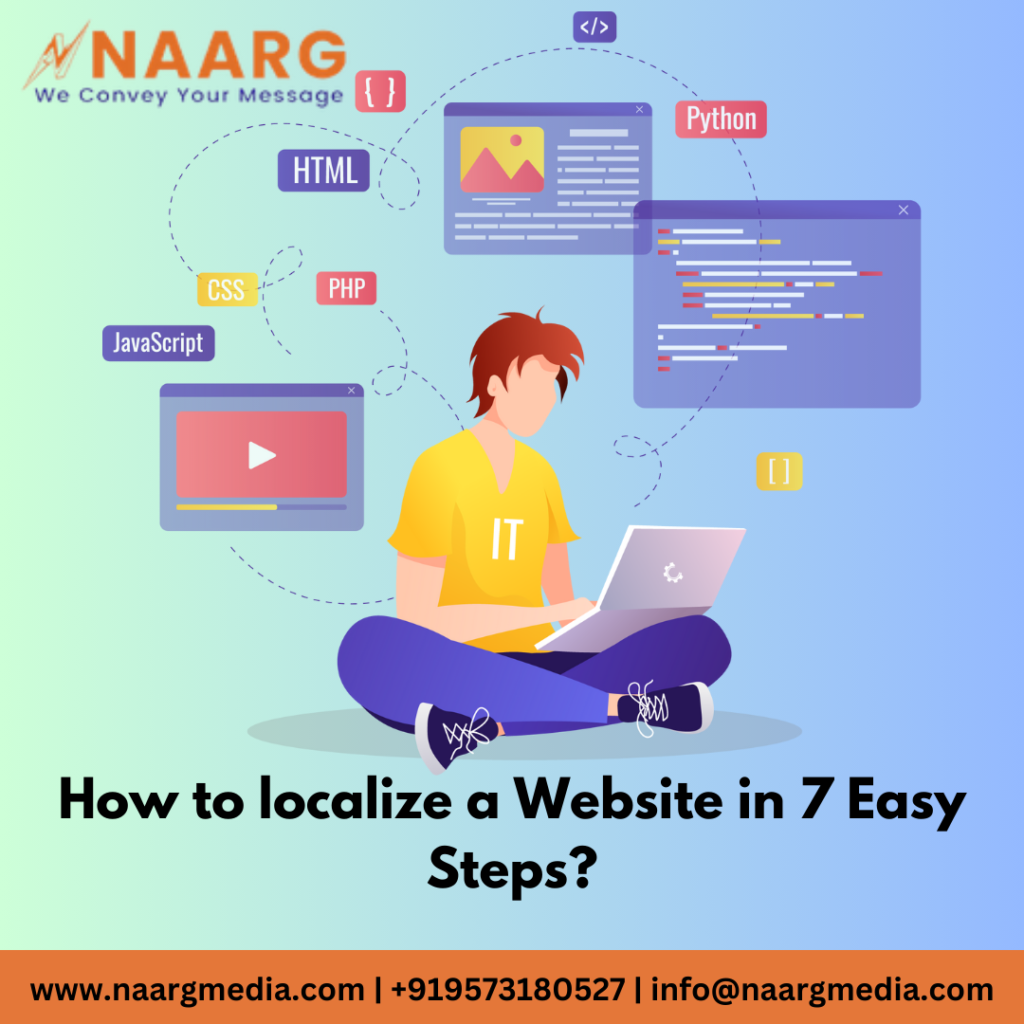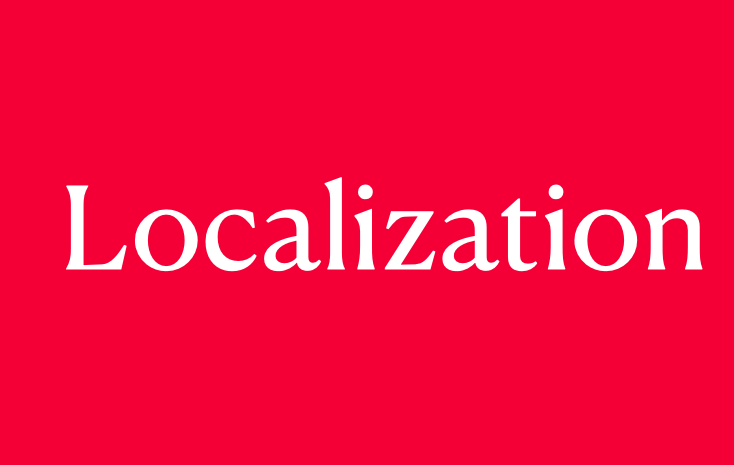MAKE YOUR FIRST IMPRESSION AS BEST!
Imagine you are about to give your first job interview at your dream company. What would the voices in your head be like? Exactly, to leave your best impression on the interviewers. You would not want to screw up anything.
You will go out of your way to ensure that you are smartly dressed, smelling good, and prepared for all the questions that they might ask. Because your first impression matters.
In this article, we will talk about how to localize a website. As the same is true when you are running a business. Your first impression matters. Your website is the first impression or rather the front door of your business. And if it is not good, then nobody is knocking at your door again.
Just as being smartly dressed helps to give a good first impression to your job interviewers. Similarly, website localization helps global businesses or businesses who aim to expand into foreign countries to leave an impactful impression on target consumers.
Oh come on, you are exaggerating things. A website can’t be the first impression. Our first impression is how our consumers find our products or services on their first purchase. Are these your current thoughts?
Let me tell you something, we all are living in a digital era. Before meeting your product/service, consumers meet your website interface. If that doesn’t appeal to your consumers, then they won’t buy your product/service.
Reports show that, if your product isn’t in the native language of your foreign consumers, 9 out of 10 users will reject it. According to the European Commission, 44% of internet users in Europe believe they are missing out on valuable information because websites are written in languages they are unable to comprehend.
I’m sure you don’t want your consumers to ignore your product/service. And worry not, because we would never let that happen to you. This article will guide you on how to localise a website in 7 easy steps which will ultimately help you to leave an impeccable first impression on your target audience.
Now, let’s take a brief look at website localization.

What is website localization?
Website localization is the process of adapting a website to appeal to a target audience. Please note that it is not a website translation which refers to translating the original website content to the target language.
Rather website localization involves altering cultural, technical, and non-textual elements along with the language. This would mean adding local idioms and cultural references. In addition to this, date and time formats, measurement units, data formats, currency formats, etc. are converted. The layout is adjusted according to the text length.
Furthermore, colors and images are also changed/checked. It is because the original color of the website may convey different meanings in different countries. For example, Red is the color that symbolizes luck and fertility in China but in African cultures, it represents death and grief. Hope you have understood the meaning of website localization.
If you are planning to set your foot in the international markets, then website localization is a must. Your website should speak the language of target consumers in a culturally appropriate manner so that they can understand your product/services.
Top 7 benefits of website localization
1. Boost sales:
Website localization helps to expand business empires. The addition of a new language to your website enables you to better serve the target market and reap its benefits. You will be able to sell your products/services not only within your national boundary but beyond it. This will help you to acquire new customers and thus increase your sales.
2. More chances of success:
You might think that having an English-language website is sufficient, but the truth is quite different. According to MotionPoint, ‘Internet users who prefer English make up 25.3% of the overall Internet market share’. Nearly 75% of people prefer to consume content in other languages. Website localization helps to please people who make up the majority of internet users. This increases your chances of becoming a successful business.
3. Improves your SEO ranking:
Website localization can help you attain better SEO or search engine optimization rankings. Your website will rank higher on online searches if the content is well-crafted and keywords are effectively used. This will result in more user accessibility, increased website traffic, and greater visibility on the internet.
4. Enhances the credibility of your brand:
A localized website is a concrete evidence that you value your audience. It indicates that you have gone above and beyond to ensure that the audience with whom you wish to communicate, properly understands your product/service. This will undoubtedly boost the credibility of your website.
5. Increases engagement:
A localized website’s increased credibility and positive user experience will increase customer engagement and satisfaction levels. They are more likely to return and even refer your product/service to others because your website could cater well to their needs.
6. Economical option:
Many companies believe that establishing a physical shop in an international market is the only way to grow globally. Not only is this untrue, but it’s also not the best strategy for breaking into international markets.
Businesses can “test the waters” and “dabble” in new markets by developing a multilingual website. Based on the responses, they can determine whether an investment in opening a physical shop in a target country is worthwhile or not.
7. Creates stronger brand image:
You can fully control your brand messaging and ensure a consistent brand experience across all countries through website localization. Conveying the same motto of your brand in different languages while making sure that it is culturally appropriate guarantees brand consistency and enhances brand image.
How to localize a website in 7 easy steps?
Below are the 7 website localization techniques which will immensely help you to grow your brand in the international markets.
Step 1: Market research
Market research is the first step of the website localization process. It is crucial to identify and define your target audience. You should ask and act on the following questions.
1. What is my target country?
2. In which part of the country do I want to sell my product/service?
For example, if India is your target country, then you need to decide in which state you want to sell your product/service. Because there are 28 states in India and each state has its different local language.
3. Will there be sufficient demand for my content, goods, and services?
For instance, it wouldn’t make sense to target New Delhi if you run a firm providing beach products as New Delhi is a landlocked city.
It is recommended to concentrate on one area at a time to obtain the finest outcomes.
Step 2: Onboard web designers and web developers
We advise hiring web developers and web designers who are familiar with the market you wish to enter. It is not enough to know the language. You’ll want to employ professionals who can inform you about the locals’ preferences based on their personal and professional experiences.
It can be expensive to hire developers and designers with local experience but in the long run, it will save time and money. You don’t want to invest money only to realize that your website localization is unsuccessful, and then spend months attempting to identify the issue.
Local experts will be able to advise you precisely on your website localization strategy.
Step 3: Select a website translation method
A key component of website localization is website translation, and there are several methods to translate your content.
Machine Translation: You can make use of online tools that will automatically translate the text on your website. Generally speaking, this is less expensive than human translation but the translation might not be accurate and may contain a lot of errors.
Machine-aided Translation: This strategy makes use of machine translation while also hiring experts to review the output for mistakes. It is better than the above option but machine translation is not reliable. On top of this, reviewers will check the translated text and not whether the meaning is retained while performing the translation.
Human Translation: This includes onboarding experienced translators or availing translation services. According to us, it is the best option as it helps in effective website language localization. Qualified translators can incorporate local slang and idioms. Additionally, they are aware of the terminology that may be more effective with your audience.
However, to handle other aspects of website translation, you’ll still need to employ developers and designers.
Step 4: Form your internal team
You should form an internal team consisting of a project manager, a reviewer, and an SEO specialist. The support of your team will prove to be a blessing for you as it will ease the stress of doing everything by yourself. This will also allow you to take care of other aspects of website localization.
Project Manager: Their responsibilities can include:
- Onboarding experienced linguists
- Assigning them the task
- Delivering the output from translators to reviewers
- Delivering the output from reviewers to the web developers and web designers
- Delivering the output from web developers and web designers to you
Reviewers: They will check the localization of website content done by the translators.
SEO Specialist: They will help you in adapting your SEO strategy.
Step 5: Customize your SEO or search engine optimization strategy
You must also take SEO into account if you want your website localization and translation efforts to be successful. Strategies that are successful in one location may not be as successful in another.
Your SEO approach has to be adjusted in many ways, including:
Reconsidering the keywords that you’re aiming for. The popularity of certain keywords in one language may not be the same in another (or vice versa). You must research the search terms that users use on the internet.
Utilizing SEO tools that support the new language. When using a program like Yoast SEO, make sure it is appropriate for the language you wish to target. Otherwise, you can receive SEO advice that could harm your localized website.
Adapting post and page titles. A translator may be able to translate titles well in other languages but they may not predict which title formats would get the greatest attention in search engine results. Rewriting translated titles to boost engagement is an essential part of effective website localization.
Modifying the alt text and meta descriptions. Examine the alt text and meta descriptions on your website. These factors are crucial for website traffic and user engagement.
Step 6: Test before launching
Localization testing is an important step that should not be skipped because it will highlight the issues, if any, in the website/content. This will aid you in fixing errors before the launch of the product/service. Nobody wants to localize their website and lose the trust of their target customers only to find out that there are flaws in the website. Furthermore, you won’t get another chance if your first impression is poor.
Localization testing can be easily performed in the browser.
Read our How to Test Localization in the Browser in 10 Easy Steps article to learn about localization testing in detail.
Step 7: Maintain your localized website
Just like your car and your body require regular maintenance, similarly, your localized website would need proper care and maintenance. It must be updated each time the original website is updated. For your localized website to succeed in the international market, you should update it as per the latest SEO trends and algorithms.
Hope you got a clear understanding of how to localize a website. But if you are still confused and overwhelmed about the amount of work that website localization requires, then do reach out to us.
We at Naarg Data Media Services believe in serving society with our excellence in the localization industry. You can completely rely on us because we are experienced in website localization and have been producing high-quality output at reasonable prices. Countless compliments from our clients say it all.
Choose Naarg for finest quality output and affordability.




